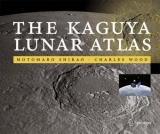The Kaguya Lunar Atlas
Springer-Verlag New York Inc.
978-1-4419-7284-2 (ISBN)
- Titel ist leider vergriffen;
keine Neuauflage - Artikel merken
In late 2007, the Japanese Space Exploration Agency (JAXA) placed the Kaguya/ Selene spacecraft in orbit around the Moon to probe the Moon’s surface and interior. But unlike previous lunar orbiters, Kaguya carries a high definition television camera (HDTV) sent beyond Earth orbit. Sponsored by the Japanese NHK TV network, the HDTV has amazed both scientists and the public with its magnificent views of the lunar surface. What makes these images so much more engaging than standard vertical view lunar photography is that they are taken looking obliquely along the flight path. Thus, they show the Moon as it would be seen by an astronaut looking through a porthole window while orbiting only 100 km above the lunar surface. This is the view we all would wish to have but are never likely to, except vicariously through the awe-inspiring Kaguya HDTV images. Each page features a HDTV image with a map of the entire Moon on the upper left showing where the image is located. On the upper right is a 100-150 word description. Seeing the Moon is not intended solely for lunar scientists who are striving to work out the mysteries of the Moon’s origin and evolution. Everyone can appreciate the natural beauty and be entranced by the view of the nearby world where humans may one day live.
About the Authors Motomaro Shirao has been a free-lance photographer and science writer since he finished his Master Course in Volcanic Geology at the University of Tokyo in 1980. He has written many articles about the Moon, volcanoes, geology, and geomorphology. His publications include Graphic Natural History of Volcanoes, Geology and Geomorphology of Japan, Basics of the Moon, and Wonderful Landscapes of the World (all written in Japanese). He is a co-investigator of Kaguya's Terrain Camera and HDTV. Charles Wood is a senior scientist at the Planetary Science Institute in Arizona and director of the Center for Educational Technologies at Wheeling Jesuit University in West Virginia. He is the author of The New Moon – A Personal View, published in 2003; The Lunar 100 Chart in 2004; and has written monthly columns about the Moon since 1999 for Sky & Telescope magazine. He is the originator of the websites Lunar Photo of the Day and The Moon Wiki. He studies the Moon with the latest spacecraft images and with a small telescope in his backyard.
Part I: Background.- Chapter 1: The Kaguya Mission.- Chapter 2: Kaguya's HDTV and Its Imaging.- Chapter 3: Images of Earth and the Kaguya Impact on the Moon.- Chapter 4: The Lunar Surface.- Part II: The Atlas.- Plates 1 to 28.- Plates 29 to 64.- Plates 65 to 100.- Thumbnail Index.- Subject Index.
| Erscheint lt. Verlag | 2.3.2011 |
|---|---|
| Zusatzinfo | 2 Tables, black and white; 9 Illustrations, color; 117 Illustrations, black and white; IX, 173 p. 126 illus., 9 illus. in color. |
| Verlagsort | New York, NY |
| Sprache | englisch |
| Maße | 279 x 216 mm |
| Themenwelt | Sachbuch/Ratgeber ► Natur / Technik ► Weltraum / Astronomie |
| Naturwissenschaften ► Physik / Astronomie ► Astronomie / Astrophysik | |
| Technik ► Luft- / Raumfahrttechnik | |
| Schlagworte | Amateur Astronomy • Astronaut view moon • HDTV moon • Hi-def photos • Japanese Moon mission • JAXA Selene • Kaguya Moon atlas • lunar atlas • lunar geology • lunar surface video • space exploration |
| ISBN-10 | 1-4419-7284-6 / 1441972846 |
| ISBN-13 | 978-1-4419-7284-2 / 9781441972842 |
| Zustand | Neuware |
| Informationen gemäß Produktsicherheitsverordnung (GPSR) | |
| Haben Sie eine Frage zum Produkt? |
aus dem Bereich




